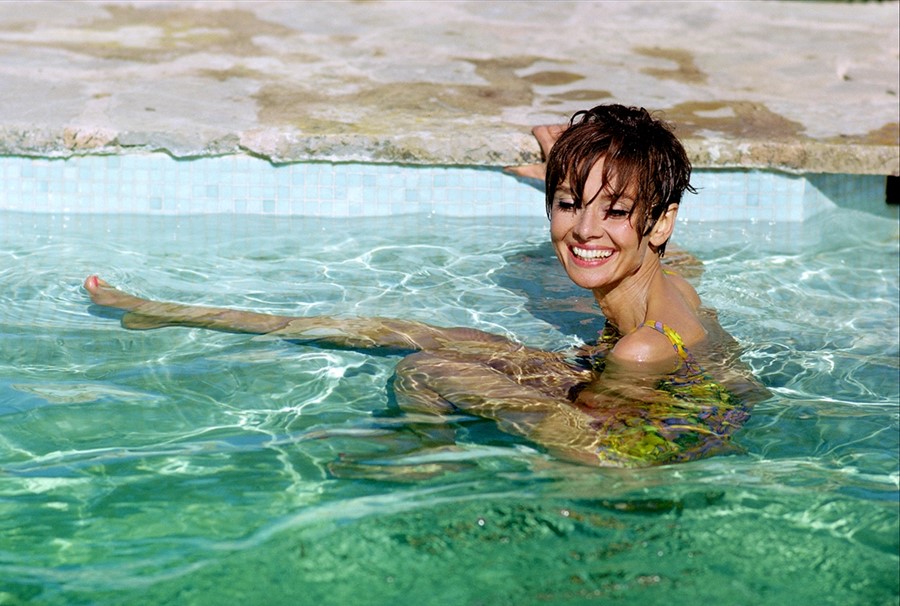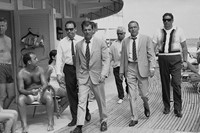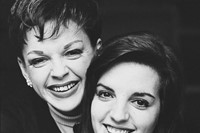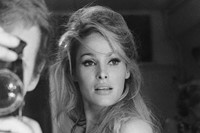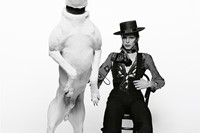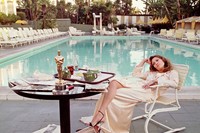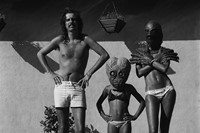The brightest photographer in the Swinging 60s remembers meeting the Beatles and catching Audrey Hepburn being chucked into a swimming pool
“It doesn't take much to make her happy. A villa, swimming pool, champagne,” states Mark Wallace – Albert Finney’s character – of Joanna Wallace (played by Audrey Hepburn) in 1967 British dramedy Two for the Road. Unlike her character in the film, it took a lot more to make Audrey Hepburn happy. “She hated the water,” says photographer Terry O’Neill. Hepburn was flung in the pool by Finney for a scene in the film, but Hepburn was so afraid of the water, standby divers were positioned just off camera to lunge in and save her. O’Neill was on set to catch Hepburn post-splash – a shot that made waves in Hollywood. “I mean, that’s what makes that picture a winner,” says O’Neill. “You couldn’t take a bad picture of her, she was one of the nicest people I’ve ever met in my life.”
It’s high praise coming from Terry O’Neill, who was buoyed up in the 60s and 70s by championing acts like The Beatles and The Rolling Stones with his lens – a man who now refers to David Bowie as “a very nice boy” and calls Faye Dunaway his ex. “I grew up in Heston, H-E-S-T-O-N,” O’Neill spells out. “It’s near [Heathrow] Airport. There was an airport at the end of our street and during the war we used to get bombed every night because, if Churchill flew somewhere, he flew from there.”
Born in 1938 and raised in an air raid shelter, O’Neill was only two at the start of the war, but he remembers the bombings “clear as a bell”. He left school at 15 in the hopes of becoming a jazz drummer, but his attempts to cross the Atlantic resulted in him signing on at the British Airways photographic unit. “I decided I wanted to go to America. It’s a 14-hour flight in those days, and you had three days off in New York, flew back and had three days off in London; I saw this as the new, two-country jazz drummer life laid out in front of me.”
After a chance snap of “Rad Butler asleep amongst a load of African chieftains” while doing ‘homework’ for British Airways (shooting guests in the airport lounge), O’Neill was approached by a reporter at the Daily Sketch, where he was then hired as the youngest dispatch photographer on staff. “When I took the job, they said, ‘We want you because we think pop music is coming up and we want to have a young kid who’s the same age as the pop groups, because you get on with them.’” He was soon thrust amongst an up-and-coming foursome. “They said, ‘Go and photograph this group down at Abbey Road, they’re making a record called Please, Please Me,’ so I go down there and it’s The Beatles.” The day his picture of The Beatles fronted the Daily Sketch, it sold out.
"They said, ‘Go and photograph this group down at Abbey Road, they’re making a record called Please, Please Me,’ so I go down there and it’s The Beatles.”
When O’Neill first photographed The Beatles, they weren’t “The Beatles”. “We used to go to this club called the Ad Lib Club, it was in the back of Leicester Square,” recalls O’Neill, “and we used to sit there every night saying what job we were going to get when this was all over, because we thought it was all too good to be true. You couldn’t get paid to do what you wanted to do and one day we’d have to get a proper job. I remember Ringo wanting to have a chain of hairdressers.”
As one can imagine, O’Neill’s intimate portraiture became something of a hot item. Now, in his sunset years, he can prattle through an address book of Hollywood heavyweights: “Judy Garland could tell jokes like she was a fabulous friend.” On Frank Sinatra: “I’m certain he was madly in love with Ava Gardner, anything she asked he’d bend over backwards to do… that sort of thing wouldn’t happen today.” On Bowie: “I see him every now and again, he’s very polite, very nice boy, good company.”
“It’s only when I went to America and I met people like Fred Astaire did I realise – The Beatles and Jean Shrimpton and Mary Quant – they’re all somebody. The PR’s and managers have killed all movie star stuff and that’s why you never see any stuff around like the stuff I’ve done, because no one’s allowed near the artist.” Is O’Neill sad, then, about the media machine? “Well, yes. I am, because I just don’t want to go through all that anymore, I don’t need to work with these people. There’s nobody around as great as the people that I’ve photographed.” Looking back, who knew a post-Oscar win Faye Dunaway on a chaise longue would fetch £120,000 at auction? Certainly not Terry O’Neill, who, after shooting close to 4 million frames of the famous, can only offer: “I wish I’d got it.”
Bond and Beyond, an exhibition of rare vintage photographs by Terry O’Neill, is at Ransom Art from 7-30th November.
Text by Trey Taylor
